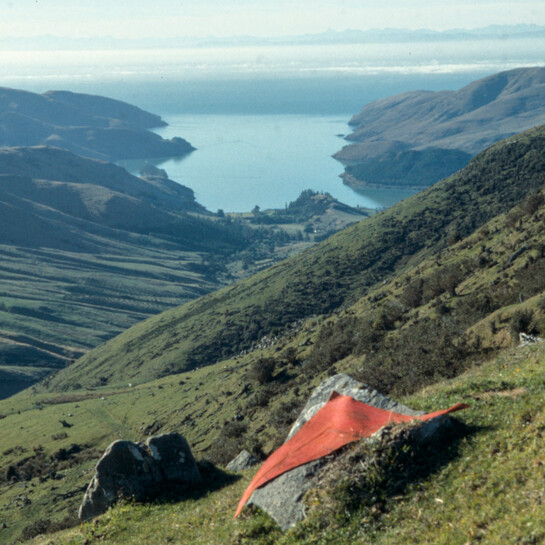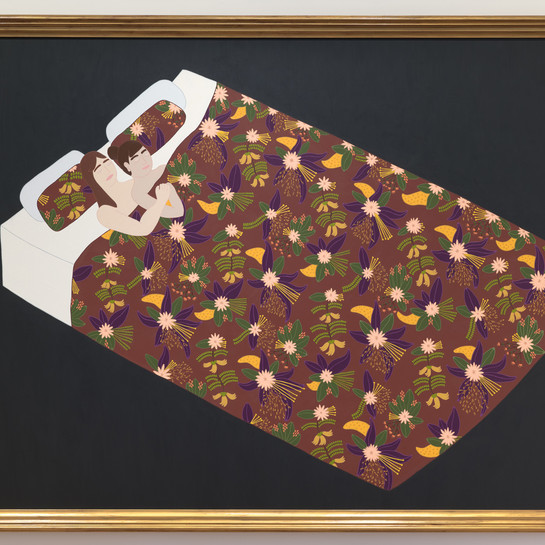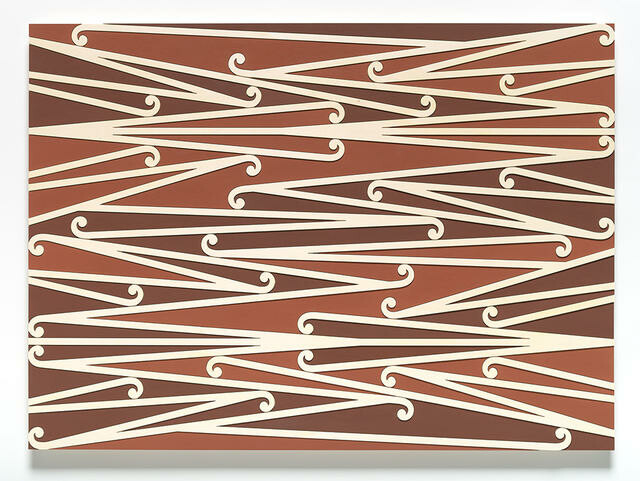Ngataiharuru Taepa
Aotearoa New Zealand, b.1976
Te Arawa,
Te Āti Awa,
Māori
Te Mahara
- 2018
- Oxides and acrylic on wood
- Purchased 2018
- 825 x 1040mm
- 2018/058
Location: Monica Richards Gallery
Tags: brown (color), koru (pattern), Māori (culture or style), patterns (design elements)
Kōwhaiwhai are the painted designs seen on the rafters of wharenui. The designs are organic and filled with great visual energy. Each design relates to a particular narrative significant to the people of a given place, acting as both an artform and archive or storytelling device. This work by Ngataiharuru Taepa references traditional puhoro kōwhaiwhai patterns representing speed, strength and agility. A child of the 1970s, Taepa expands on traditional and modernist Māori art legacies to identify the contemporary Māori experience, while remaining aligned with the visual lexicon and conceptual views of his predecessors.
(Living Archives, 25 October 2025 – 8 March 2026)
Exhibition History
Te Wheke: Pathways Across Oceania, 30 May 2020 – 3 July 2022
Kōwhaiwhai are the painted designs seen on the rafters of wharenui (Māori meeting houses). The designs are organic and filled with great visual energy. Each design relates to a particular narrative significant to the people of a given place. This work by Ngatai Taepa references traditional puhoro kōwhaiwhai patterns representing speed, strength and agility. A child of the 1970s, Taepa expands on traditional and modernist Māori art legacies to identify the contemporary Māori experience, while remaining aligned with the visual lexicon and conceptual views of his predecessors. He is expressing how the environment and social landscape of Aotearoa New Zealand has changed, and presenting his thinking in Māori visual terms.


